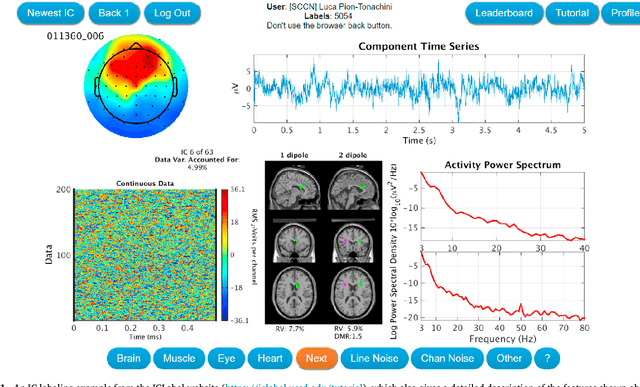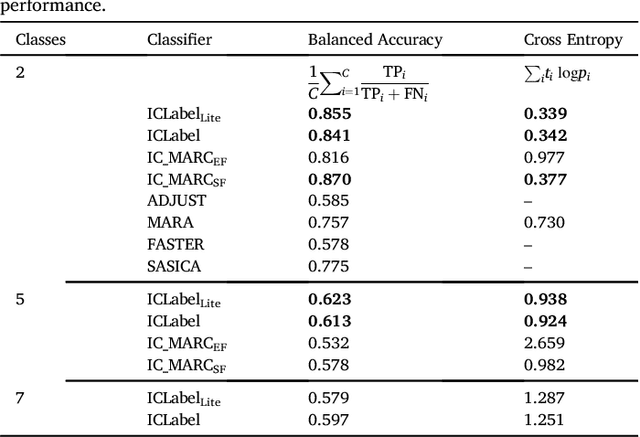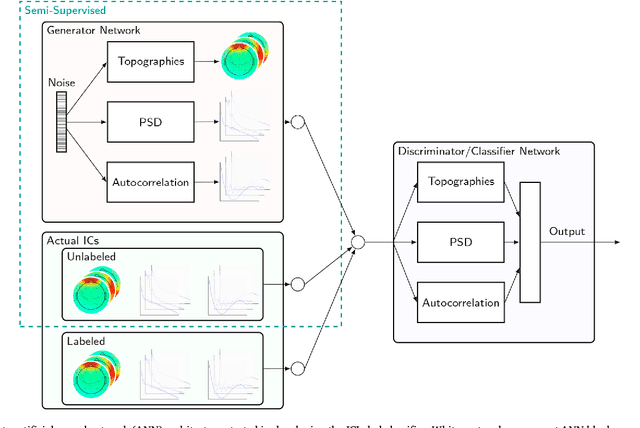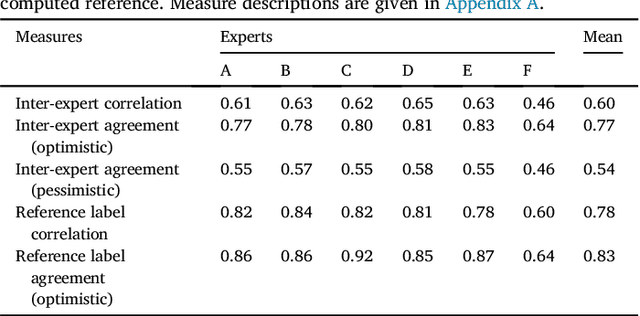ICLabel: An automated electroencephalographic independent component classifier, dataset, and website
Paper and Code
Feb 04, 2019



The electroencephalogram (EEG) provides a non-invasive, minimally restrictive, and relatively low cost measure of mesoscale brain dynamics with high temporal resolution. Although signals recorded in parallel by multiple, near-adjacent EEG scalp electrode channels are highly-correlated and combine signals from many different sources, biological and non-biological, independent component analysis (ICA) has been shown to isolate the various source generator processes underlying those recordings. Independent components (IC) found by ICA decomposition can be manually inspected, selected, and interpreted, but doing so requires both time and practice as ICs have no particular order or intrinsic interpretations and therefore require further study of their properties. Alternatively, sufficiently-accurate automated IC classifiers can be used to classify ICs into broad source categories, speeding the analysis of EEG studies with many subjects and enabling the use of ICA decomposition in near-real-time applications. While many such classifiers have been proposed recently, this work presents the ICLabel project comprised of (1) an IC dataset containing spatiotemporal measures for over 200,000 ICs from more than 6,000 EEG recordings, (2) a website for collecting crowdsourced IC labels and educating EEG researchers and practitioners about IC interpretation, and (3) the automated ICLabel classifier. The classifier improves upon existing methods in two ways: by improving the accuracy of the computed label estimates and by enhancing its computational efficiency. The ICLabel classifier outperforms or performs comparably to the previous best publicly available method for all measured IC categories while computing those labels ten times faster than that classifier as shown in a rigorous comparison against all other publicly available EEG IC classifiers.
 Add to Chrome
Add to Chrome Add to Firefox
Add to Firefox Add to Edge
Add to Edge